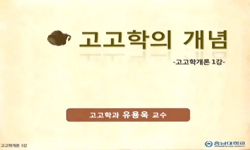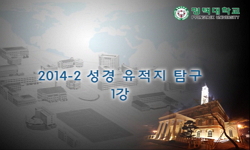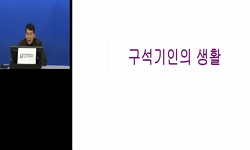본고에서는 전남지역의 석실분에서 출토된 토기의 검토를 통해 석실분의 변천과정과 토기의 변화상을 살펴보고자 하였다. 기존의 연구성과를 토대로 석실분의 유형을 분류하고 변천과정을...
http://chineseinput.net/에서 pinyin(병음)방식으로 중국어를 변환할 수 있습니다.
변환된 중국어를 복사하여 사용하시면 됩니다.
- 中文 을 입력하시려면 zhongwen을 입력하시고 space를누르시면됩니다.
- 北京 을 입력하시려면 beijing을 입력하시고 space를 누르시면 됩니다.
https://www.riss.kr/link?id=T9478105
- 저자
-
발행사항
광주 : 全南大學校 大學院, 2004
-
학위논문사항
학위논문(석사)-- 전남대학교 대학원: 인류학과(고고학전공) 2004. 2
-
발행연도
2004
-
작성언어
한국어
- 주제어
-
KDC
913.0025 판사항(4)
-
발행국(도시)
광주
-
형태사항
60p. : 삽도 ; 30cm .
-
일반주기명
참고문헌: p. 44-46
- 소장기관
-
0
상세조회 -
0
다운로드
부가정보
국문 초록 (Abstract)
본고에서는 전남지역의 석실분에서 출토된 토기의 검토를 통해 석실분의 변천과정과 토기의 변화상을 살펴보고자 하였다. 기존의 연구성과를 토대로 석실분의 유형을 분류하고 변천과정을 파악한 후 전남지역 석실분 출토 토기의 양상과 변화를 파악하고자 하였다.
전남지역 석실분 중 토기가 출토된 석실분은 38기이며 기존 연구성과에 따라 영산강식과 백제식으로 구분하였다. 영산강식 석실분은 주로 구릉에 입지하고 분구의 형태가 장고형, 방대형, 원형 등 다양하며 동-서 장축이 주를 이루고 석실이 지상에 위치하고 중앙연도가 많은 편이다. 백제식 석실분은 능선사면에 입지하고 분구형태는 원형이며 남-북 장축이 주를 이루고 석실은 지하나 반지하에 위치하며 우편연도가 많은 편이다. 영산강식 석실분이 백제식 석실분보다 앞선것으로 파악되고 있다.
전남지역 석실분에서 출토된 토기의 기종은 대략 30여종이다. 이 가운데 개배, 단경호, 장경호, 직구호, 직구소호, 기대, 고배, 유공광구소호, 병 등이 전체 개체수의 80%를 점유하고 있다. 각 기종별로 살펴보면 개는 상면, 배는 바닥면의 형태에 따라 Ⅰ·Ⅱ·Ⅲ형식으로 구분하였다. 높이에서 Ⅰ·Ⅱ형식과 Ⅲ형식이 차이를 보이고 있는데 Ⅰ·Ⅱ형식은 영산강식 석실분에서 주로 출토되며 Ⅲ형식은 백제식 석실분에서 출토되고 있어 크기에 따른 시간적인 변화양상을 확인할 수 있다.
단경호는 동체의 형태에 따라 Ⅰ·Ⅱ형식으로 구분되며 Ⅰ형식은 영산강식 석실분에서 주로 출토되고 Ⅱ형식은 백제식 석실분에서 출토되고 있어 동체의 형태에 따른 시간적인 변화상을 살필 수 있다. 직구소호는 높이와 저부, 동체의 형태에 따라 Ⅰ·Ⅱ형식으로 구분되는데 Ⅰ형식은 영산강식 석실분에서 주로 출토되고 Ⅱ형식은 백제식 석실분에서 출토되고 있다. 고배는 연질소성에서 경질소성으로 변화하며 경질소성은 무개고배에서 유개고배로 변화한다. 유개고배는 점차 배신부가 낮고 형식적인 것으로 변화해간다. 연질고배와 무개고배는 영산강식 석실분에서 주로 출토되고 있다. 병은 저경과 동최대경의 위치에 따라 Ⅰ·Ⅱ형식으로 구분되며 Ⅰ형식은 영산강식 석실분에서 Ⅱ형식은 백제식 석실분에서 주로 출토되고 있다.
이상에서 살펴본 것과 같이 석실분의 유형에 따라 부장되고 있는 각 기종의 형태상의 차이를 볼 수 있는데 이는 각 기종의 시간적인 변화상을 보여주는 것으로 판단된다. 또한 석실분의 유형에 따라 부장조합의 차이도 관찰할 수 있는데 영산강식 석실분에서는 개배, 단경호, 직구소호, 병, 장경호, 유공광구소호, 고배, 기대 등 다양한 기종이 출토되고 있으며 이 중 유공광구소호와 장경호는 영산강식 석실분에서만 출토되고 있다. 반면 백제식 석실분은 영산강식 석실분에 비해 출토되는 토기의 기종이 한정되고 토기 출토량도 적다. 영산강식 석실분과 백제식 석실분에서 모두 출토되는 개배, 단경호, 직구소호, 병은 영산강식 석실분에서는 개배와 단경호의 점유율이 높고 백제식 석실분에서는 출토량이 감소하는데 반해 직구소호와 병은 백제식 석실분에서 출토량이 증가하는 양상을 보이고 있다.
전남지역 석실분 출토 토기는 일부기종에서 석실분의 유형에 따라 토기 형태의 변화를 확인할 수 있으며 전체적인 부장조합에서도 영산강식 석실분과 백제식 석실분의 차이를 보이고 있는 것으로 판단된다.
다국어 초록 (Multilingual Abstract)
The purpose of this manuscript is to study the earthenware excavated in Chonnam area stone-chamber tomb and inspect the transition of stone-chamber tombs and change of earthenwares. First of all, earthenware excavated in stone-chamber tomb will be cla...
The purpose of this manuscript is to study the earthenware excavated in Chonnam area stone-chamber tomb and inspect the transition of stone-chamber tombs and change of earthenwares. First of all, earthenware excavated in stone-chamber tomb will be classified and the understanding of the transition will be followed based on the existing study outcomes. Afterwards, based on the transition of the stone-chamber tombs accompanied with earthenware, understanding the transition of each types of earthenware and those of earthenware excavated in Chonnam area stone-chamber tomb occurs.
Among Chonnam area, earthenwares were found at 38 stone-chamber tombs and they were classified into Young-San and Paek-Jae type depending on the existing study outcomes. The Young-San river type stone-chamber tombs are mainly placed on a hill and have various forms of the entrance such as shape of Chango, square and circle. They ares ually the east-west major axis and stone-chambers are placed upon the ground and relatively have many center route passage into the tomb.
The Paek-Jae type stone-chamber tombs are mainly placed on a ridge-line of a hill and have entrance which has circle form. They are usually the east-west major axis and stone-chamber is placed under the ground or semi-underground and relatively have many right route passage into the tomb. It is understood that Paek-Jae type stone-chamber tombs precedes the those of Young-San river.
There are 30 kinds of earthenwares which were excavated in Jeon-nam area stone-chamber tombs. Among these, jar with short-neck, long-neck, vertical mouth rim, mounted cup, wide mouth with holes, and small jar with vertical mouth rim, flat cup with cover, pottery stand, and bottles occupy more than 80% of all earthenwares. They are classified into Ⅰ·Ⅱ·Ⅲ types according to forms of covers and flat cups. Height of each type makes the difference and type Ⅰ·Ⅱ are usually found at the Young-San river type stone-chamber tombs and Ⅲ type at the Paek-Jae type stone-chamber tombs which makes it possible to certify the time transition.
The jars with short-neck is divided into Ⅰ·Ⅱ types by the forms of body. Also, I type is found at the Young-San river type and Ⅱ type at the Paek-Jae type stone-chamber tombs. The mounted cup changes from softness to hardness and softness changes from unlidded to lidded. The body of lidded jars with short-neck become lower for the sake of formality. Soft and hard jars with short-neck are being excavated at the Young-San river type stone-chamber tombs. Bottles are divided into Ⅰ·Ⅱ types according to the placement the bottom diameter and the maximum diameter of the body and Ⅰ type are found in the Young-San river type Ⅱ and type in the Paek-Jae type stone-chamber tombs.
As it is studied, the differences can be found among each forms of earthenwares depending on the forms of stone-chamber tombs and it seems to be showing the time transition of each earthenware. Also, differences among vertification are found according to the types of the stone-chamber tombs. In the Young-San river type stone-chamber tombs, various earthenwares such as flat cup with cover, jar with short-neck, small jar with vertical mouth rim jar with long-neck and bottles, jar with wide mouth and holes, mounted cup, pottery stand are excavated and among these, jar with wide mouth and holes, jars with long-neck are excavated only in the Young-San river type stone-chamber tombs. In other hands, the earthenware of the Paek-Jae type stone-chamber tombs are limited in their numbers and types compared to the Young-San river type stone-chamber tombs. flat cup with cover, jar with short-neck, small jar with vertical mouth rim and bottle are found in both Paek-Jae and Young-San river type stone-chamber tombs. However, flat cup with cover와 jar with short-neck are high in numbers in the Young-San river type stone-chamber tombs and lower in the Paek-Jae type and oppositely, small jar with vertical mouth rim and bottle are high in number in the Paek-Jae type stone-chamber tombs.
The transition of some of the earthenwares excavated in Chonnam area stone-chamber tomb could be inspected by the types of the stone-chamber tombs. In addition, it is estimated that the Young-San river type and the Paek-Jae type stone-chamber tombs are showing differences in whole.
목차 (Table of Contents)
- 목차
- (국문초록) = ⅰ
- 1. 서론 = 1
- 가. 연구 배경과 목적 = 1
- 나. 연구 현황 = 1
- 목차
- (국문초록) = ⅰ
- 1. 서론 = 1
- 가. 연구 배경과 목적 = 1
- 나. 연구 현황 = 1
- 다. 연구대상과 방법 = 4
- 2. 전남지역 토기 출토 석실분 유적의 검토 = 5
- 3. 전남지역 석실분 출토 토기의 분석컴토 = 17
- 1) 개배류 = 19
- 2) 호류 = 23
- 3) 유공광구소호 = 28
- 4) 기대 = 30
- 5) 고배 = 30
- 6) 병 = 31
- 4. 전남지역 석실분 출토 토기의 전개양상 = 33
- 가. 석실분의 유형과 변화양상 = 33
- 나. 석실분 출토 토기의 변화양상 = 37
- 5. 결론 = 41
- 圖面 = 43
- -참고문헌- = 44
- (Abstract) = 47
- 附錄 = 50












